The complete guide to cold email outreach
A complete guide for writing the best cold email campaigns with high response rates. See cold email examples and templates
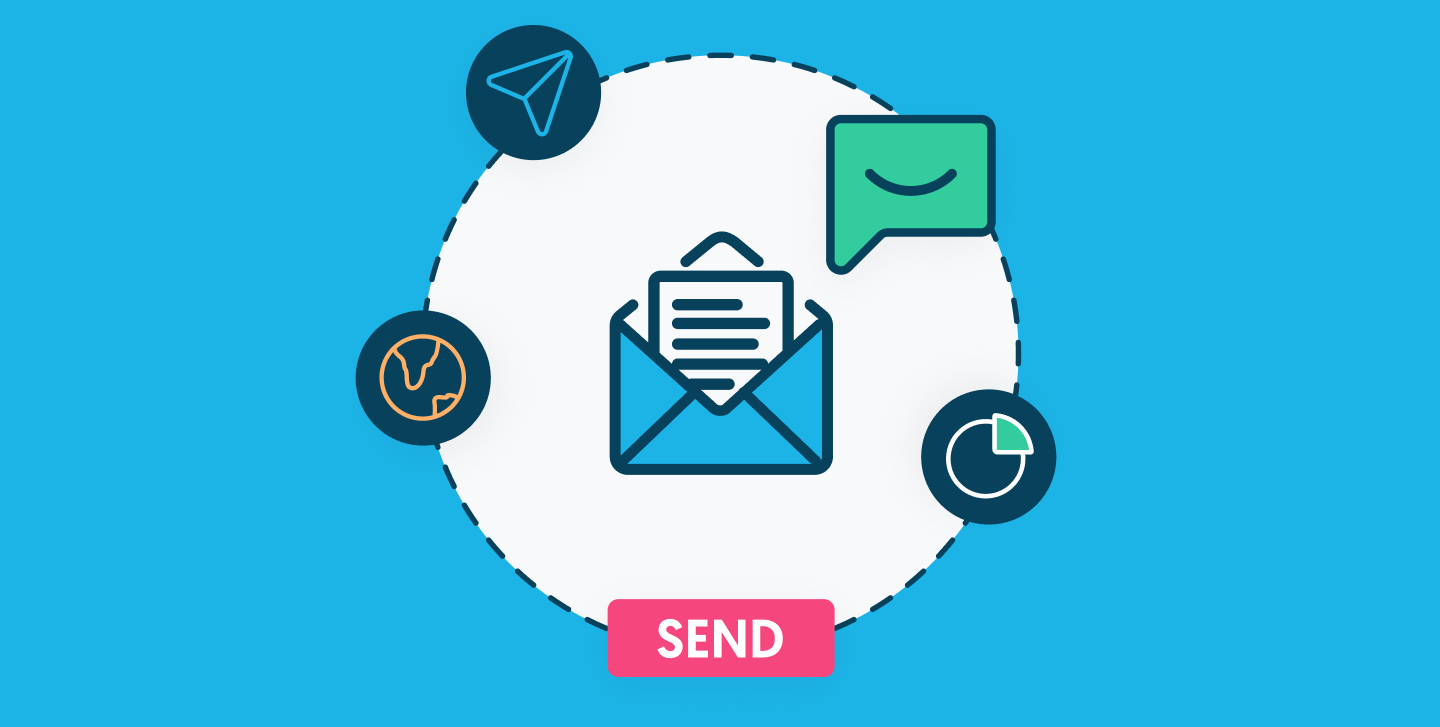
Cold email outreach suffers from low popularity among marketers because it is hard to do with good results (but is it really?).
Like many things in life, it’s complicated to do things simply. And this may be the reason why most people tend to do cold email outreach completely wrong. Consequently, they get low open rates and mostly negative results. This common hardship causes good people to stay away from cold outreach, and it may be the reason why so many marketing professionals see it as an underrated strategy.
Likely, things can’t be all that bad. Cold email outreach can work great and bring positive results.
Let’s start!

What is cold email outreach?
Cold email outreach is when you send an email to a potential customer who doesn’t know you or your business. In content marketing, cold email outreach is typically used to promote content, add backlinks, or attempt to form a partnership with an influencer.
Good cold email outreach is about creating relationships
Cold outreach is used to get your prospects to do things for you, but they are really about what you can do for them. A cold email’s goal is to pique the interest of your recipient so that a relationship of giving and taking can be built. It doesn’t matter if you’re attempting to build backlinks, promote websites across different niches, or offer potential clients the deal of the century, it’s the relationship that will bring you there.
Everybody can benefit from building relationships through outreach. I’ve cooperated with the weirdest sites in ways I never expected just because they piqued my interest. I’ve created mutually beneficial relationships with all kinds of websites and companies, such as SaaS, e-commerce, and service providers. If you aim to create a connection with your prospect, even around a short-term goal, it will show in your writing and gain your attention, empathy, and trust (that should not be misused).

How to measure the effectiveness of your cold email outreach campaign
So, how do you understand that your cold email outreach campaign was successful?
If you see that your emails are not just read but replied to, it means the campaign was successful. There are a couple of metrics you should pay attention to while running cold email outreach campaigns. Knowing and using these will help you gradually optimize your effort so you get more done with less work.
Important metrics for measuring cold email outreach campaign success:
- Deliverability (“open rate” or whether emails have been opened)
- Reply rate (how many replies you get)
- Conversion rate (how many replies are converted into sales)
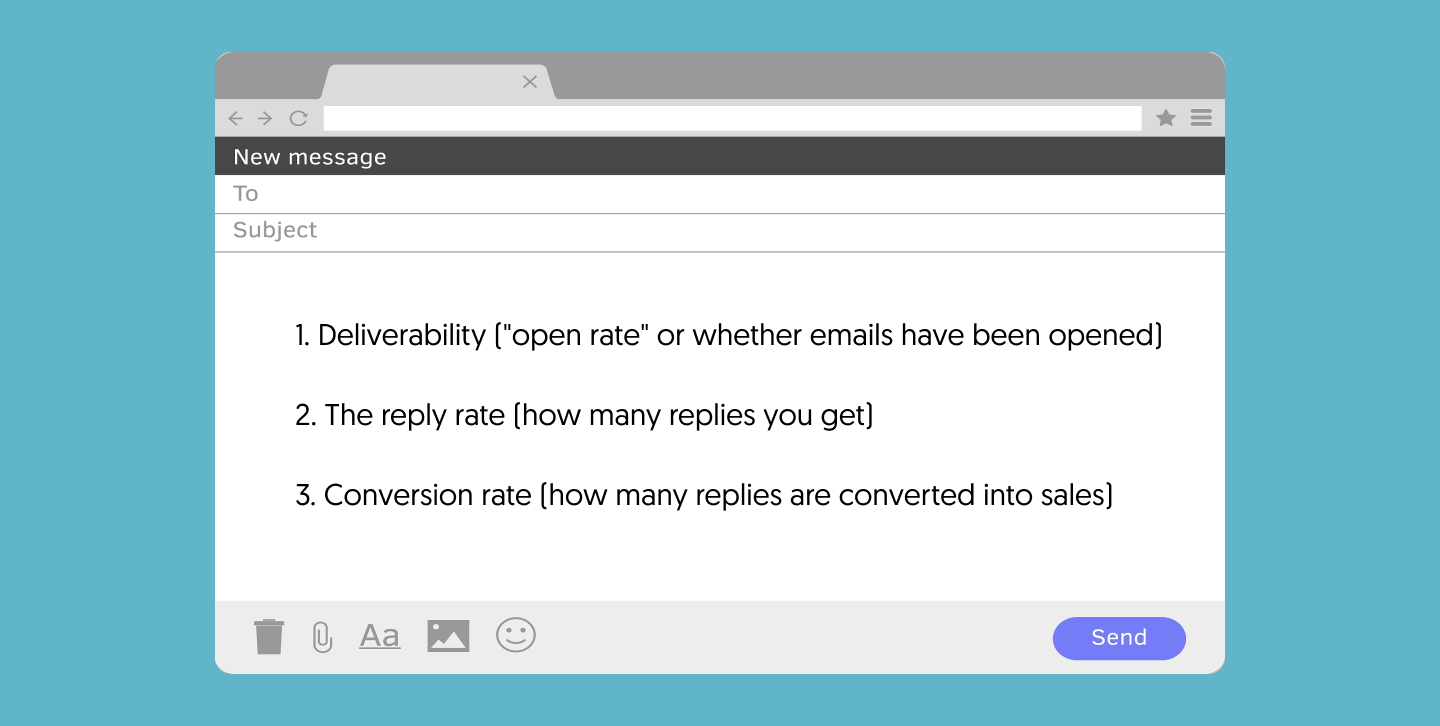
Cold email outreach campaigns can have different goals. So, the conversion rate metric may vary in definition. You may be measuring “Links built”, MQLs (Marketing Qualified Leads), Signups, etc. WHat’s important is that you keep an eye on the ball, and measure what matters according to your goals and KPIs. Otherwise, your efforts may not contribute to business growth.
Cold outreach email examples and when to use them
So, what types of cold outreach emails you can use for your marketing campaigns?
There are 6 main types of cold outreach by email:
- Sales emails
- Media pitch emails
- Networking pitch emails
- Brand pitch emails
- Content promotional emails
- Link building emails
Let’s review them one by one with some examples…
1. Sales type emails
When it comes to selling a product/service or moving your customers down the sales funnel, cold emails could help you a lot.
However, you should keep in mind that most people don’t like receiving this type of cold email. And this is for a good reason. Lots of companies don’t shy away from disturbing their prospects with additional phone calls that people get after receiving cold emails.
It is really irritating, isn’t it?
Instead, you can combine cold email outreach with using social media channels to connect with the prospects. By following this way of additional connection will be more resultative though. For example, you can re-share one of the Tweets your target posted on Twitter. Afterward, you will show that you care about building some initial relationships with the prospect.
You have to be calm, polite, and friendly in your cold email pitches. If you show some aggression, it won’t help you achieve your sales goal.
Make sure your cold emails don’t have the following template structure:
Dear protective client,
I just want 5 minutes from your busy schedule and immediately want to draw attention to our full-service digital marketing services. If you want to lead the digital race and want to improve your ROI, we can help! we can help, we can help you create an experience that grows business, drive results, and transform brands.
We provide services like:
1. Search engines optimization (SEO)
2. Pay per click Remarking3. Facebook advertisements
4. Social media marketing
5. Content writing
Why choose us?
we manage our clients’ work and projects through collaboration tools- Basecamp. We’ve paid access to SEO tools such as Moz, aHrefs, SEmrush, Raventoold, Hootsuite, Majestic, Serpbook, and more. We work 2 hours on each project and build 2-3 backlinks (high-quality, no-compromise).
Share your requirements/content details and let’s have a detailed discussion
Thank you,
As you can see, the biggest mistake of this very email template is that it doesn’t show the awareness of a prospect’s issues. Hence, your main priority in sending cold emails for sales must be focusing on building trust and relationships in the first place. Only after that, you will be able to sell your service/product.

2. Media pitch emails
Right before we start talking about media pitch emails, let’s find out what media pitching is.
Media pitching is the activity that includes promoting information about your service/product to bloggers, journalists, and influencers in your business niche. The aim of media pitching is to get more brand exposure and press coverage.
Practice shows that top publishers receive a huge number of emails each week. Due to this fact, your pitch might be missed. Plus, lots of these pitches don’t provide any value to the people you’re reaching out to.
The question is how to solve this problem.
First and foremost, you must provide real value to the recipients. Other than that, you can:
- Let a blogger know about a type you found on the blog
- Present some new data or case study that is worth attention
- Reach out and let an influencer know that you have mentioned him or her in your publication
Let’s review an example of a media pitch email template:
Hi (first_name).
[your name] here with [company name], respect your reporting a ton, love everything you put out.
Just finished reading your [Topic] article. It was interesting to learn [insert Article summary here].
Noticed a couple of types and thought I should reach out ) it’s my OCD kicking in):
– Spelling error 1
– Spelling error 2
Look forward to your next story. What article are you working on next?
Cheers!
This example of a media pitch email template aims to let the prospect know about the typo on the blog. It is a goodwill gesture from your end. In this very case, your purpose is to build relationships that will give you more marketing opportunities.
3. Networking pitch emails
Let’s admit that every cold email outreach type focuses on networking. It doesn’t matter what you get from your pitch in return – a backlink to your blog post, new marketing cooperation, or selling a product. Whatever the result it leads to networking.
Subject line: [need your advice]
[greeting of choice]
[statement that provides the context in which you met or what you’re asking for.]
[Request to meet with the person to listen and learn.]
[closing of choice]
Don’t hesitate to use the structure of this template as it is quite actionable.
4. Brand pitch emails
The name of this type of cold email pitch is self-explanatory. It aims to help you build cooperation between your company and a certain brand you are interested in.
Why does this type of cold email outreach might be useful for your business?
Obviously, you know your target audience’s needs. You know how to solve the problems people have. And you know what additional services/products might call the interest of your audience.
So, why don’t help your audience more by connecting the prospects with other companies?
This “brand connection” will help raise awareness among your audience and build new business opportunities on a win-win basis.
But here you must be very careful with your email template subject line and the content in the body.
The subject line must be eye-catchy and informative. You should go straight to the point. For example, you want to build a brand collaboration with some company. Therefore, the subject line must tell about your intention:
- {first name}, need some additional help with your service?
- {first name}, what about building cooperation between [company] and [company]?
Here is an example of a template that works with the first subject line:
Hey,
My name is (your name) and I’m helping brands like (a) (b) and (c) sell more products online.
I’ve been blogging for over (years) and have a website that gets over (visit) monthly visits.
I heard about (organization) from (conference or event), checked your Instagram and Facebook, and really like your products.
Would you be interested in discussing collaboration between us?
Here is how (usually) works:
- You send me some samples of you products
- I see what I like most about them and if they could be a fit for my audience
- We decide on the ways we’re going to promote them (e.g sponsored post, instagram giveaway)
If you would like to learn more please book a meeting on my calendar for next week.
Waiting to talk to you.
Thanks,
Name
Remember, this type of cold email outreach must focus on providing benefits to the prospects you’re reaching out to. Thus, your template must answer the question “What’s in it for me?” (for the prospects). Otherwise, it will look like a generic cold email outreach pitch that doesn’t deserve feedback.
5. Content promotional emails
It is strictly important to build a powerful content strategy for your blog. By producing high-quality content you will be able to drive more traffic to your website organically. But content can’t work properly without a promotion.
Cold email outreach is the solution at this point.
Content promotion with the help of cold email outreach helps you acquire backlinks, get mentions, or references to your pieces of content.
For example, the following email template can be used to promote any blog post on your blog. The trick here is that you focus your attention on the specific term that has a direct relation to your topic of the post:
Subject line: a quick question about a (blog name)
Hi [first name],
It’s Sergey from [company name] here, out of Washington D.C.
I was going through your article on (link + post) and shiver me timber if it’s not a good read!
You did glance over the “ebook” term for a brief moment in your section about (details), but didn’t cover it too extensively, nor did you link to a different resource that does.
By the way, we released an article we’re pretty proud of that suggests 8 steps that will help create an ebook. I think it would be a great addition to the topic for the more curious dudes in your audience who would like to learn more about marking eBooks.
Feel free to check it out: [URL]
If you like the post, would you consider referencing our article in the article I mentioned?
Let me know what you think and we’d be more than happy to share your updated post with our large social audience.
Look forward to hearing from you,
Furthermore, you should show that you have read the prospect’s blog post carefully. That’s why this template contains a section where you point out the place where the “term” has been noticed with detail.
The next important aspect of this template is that you should ask if the recipient thinks that your piece of content could be included as an additional source of information.
Plus, you can use this template not just for promoting your content but other landing pages as well. Even if you think that some of them are hard to promote with cold email outreach.
7. Link building emails
Even though SEO strategies vary, they have a common goal – to move your website’s ranking. SEO specialists know how it is important to acquire backlinks for their website pages. That’s why they use cold email outreach to build inbound links.
Link building cold outreach counts a number of ways you can gain links to your website. The most popular are:
- Unlinked brand mentions
- Broken link building
- Guest blogging
- Co-marketing activities with other companies
- Link reclamation
- etc.
For example, we want to promote one of our landing pages by building more backlinks. Let it be a flowchart maker page. In this case, we are going to use the following cold email template:
The structure of this template looks quite simple. But the section where you include differentiating factors of your pitch makes the email look persuasive.
Nevertheless, you must be a hundred percent sure that you’re reaching out to the prospects who would be related to your message.
Now, let’s review some actionable tips on how to write cold email messages.
Hello [first name],
I wanted to quickly show my appreciation for your [url_tittle] resource posts: [URL].
Thought you’d be interested in including [your post/company/product].
[a sentence or two about the differentiating factors of your pitch].
I’d be happy to share your post with our (# of followers) followers on social to drive traffic to the article.
Looking forward to your reply!
Tips on writing cold email messages
Cold email is always challenging because it’s like knocking on a stranger’s door. Will they respond warmly or even at all?
Luckily, there are tips for writing successful cold emails that will help you increase receptive replies. And when you send cold emails often, you start to notice patterns – what works and what doesn’t.
Successful cold outreach is based on a comprehensive system that includes choosing the right prospect to reach out to, creating an eye-catchy subject line, and adding an actionable call-to-action.
We review this system below.
1. Contact the right person
Cold email outreach starts with finding the correct contact information of the prospects. If you send your email pitch to the wrong recipient, the message might be left without a reply (in a best-case scenario). In the worst case – it might end up in a spam folder.
How to make sure your messages are getting delivered to the right prospects?
First of all, you must understand the main goal of the cold email outreach you’re running.
Let’s say, you want to promote your piece of content by building more backlinks from third-party resources. You must reach out either to a blog editor, marketing/SEO manager, or the author of the post you want to get a backlink from. To find the right prospect, visit the LinkedIn page of the company and check out if the author of the blog post is an employee.
To narrow down the results, use the filters that LinkedIn suggests. You can type the full name of the author or the job title (editor, marketing manager) of a potential prospect.
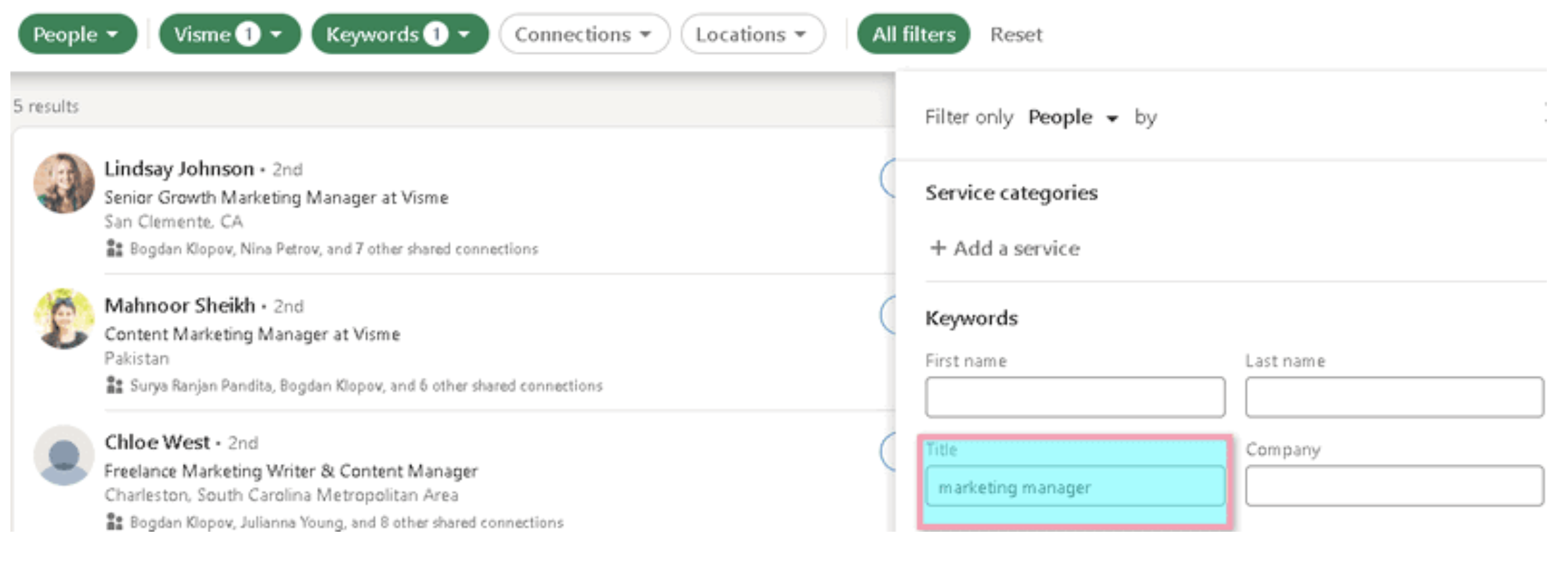
Once you figure out the right prospect, you should find the correct email address. Sometimes people show their email right in their profile. But if you can’t see it there, it is time to use a few specific tools for this purpose.
Chrome extension SalesQL extracts email addresses of the prospects right from their LinkedIn profiles:
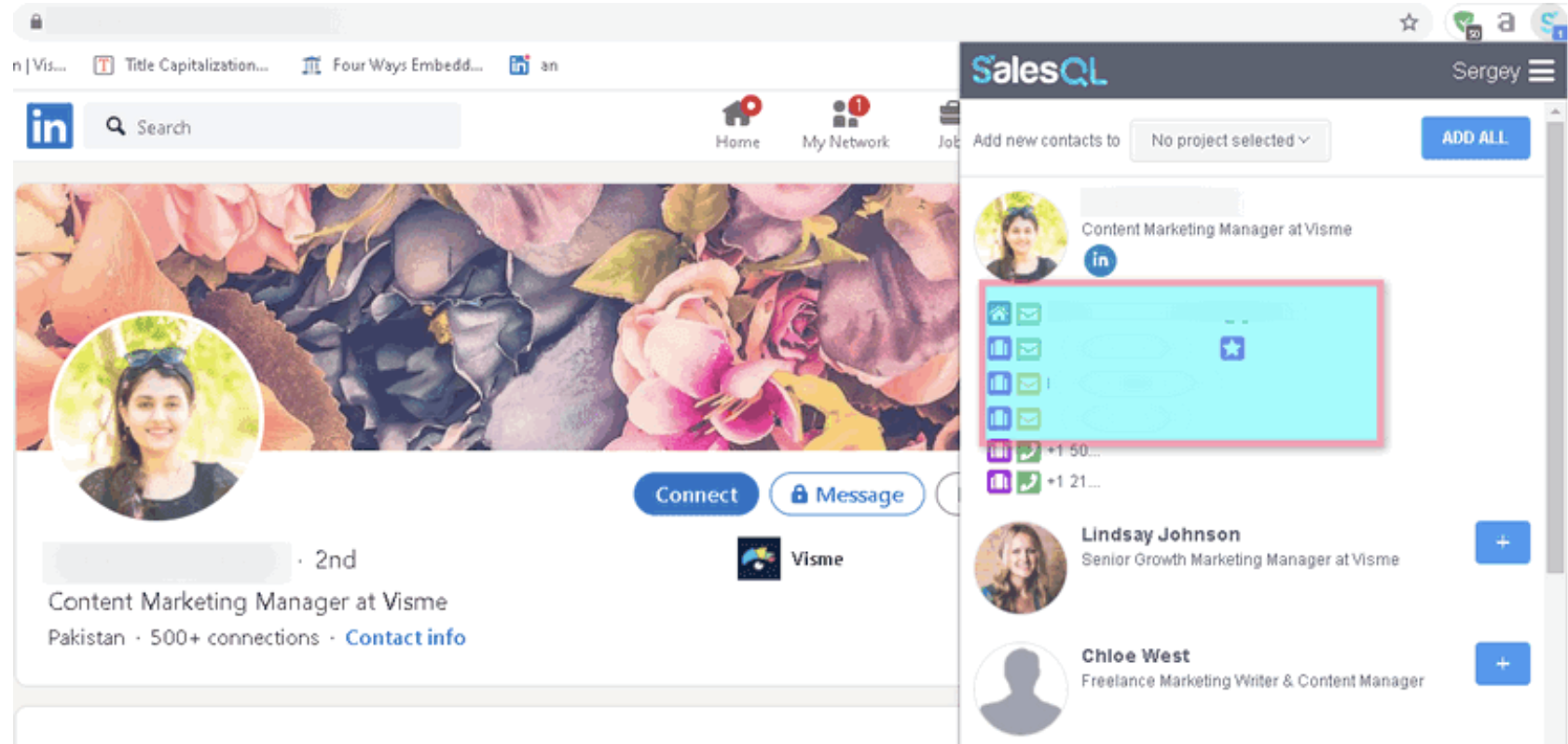
If it doesn’t help, you can use Hunter:
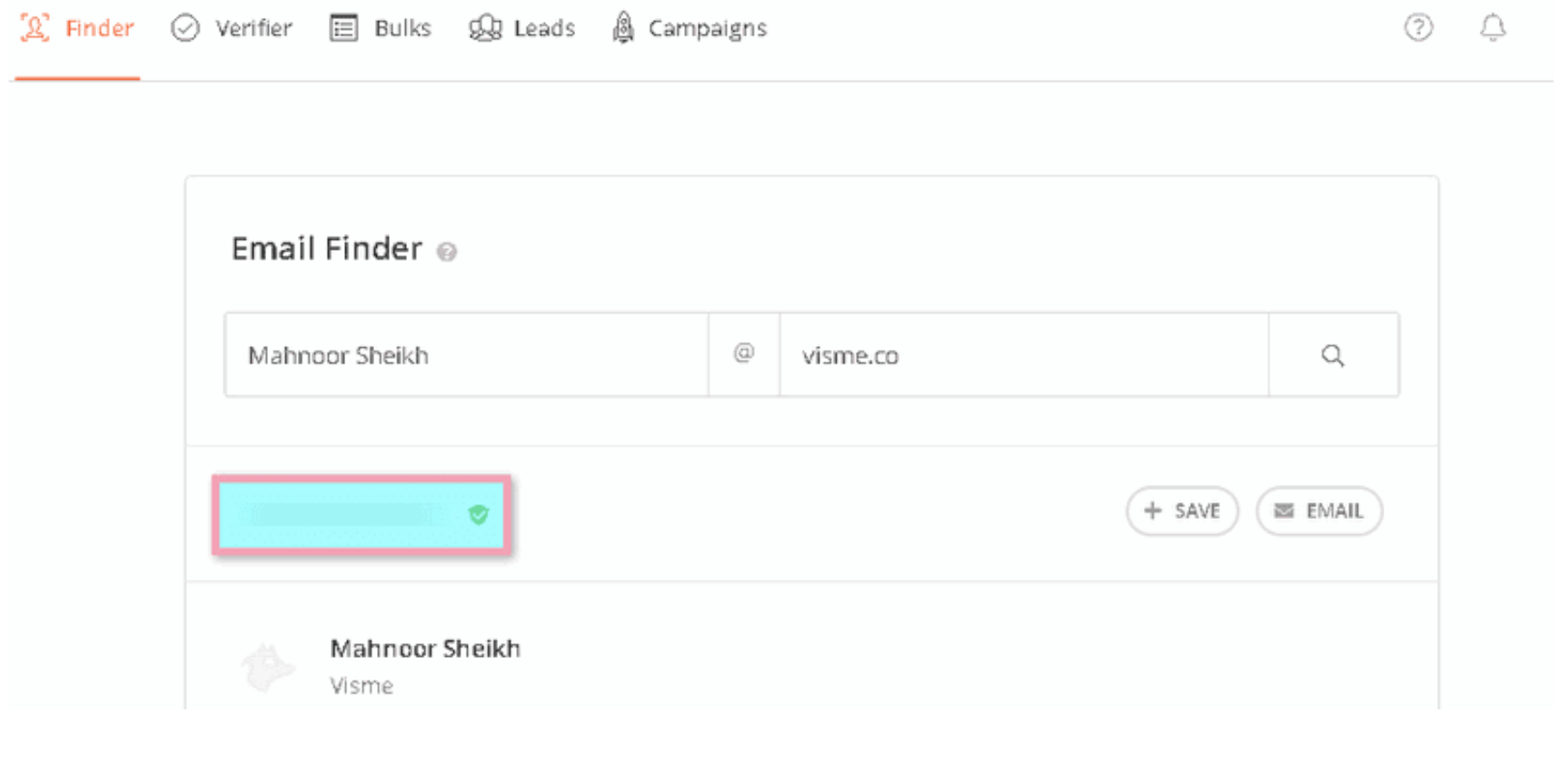
When the list of the right prospects with their contacts is ready, you should proceed with writing an eye-catchy subject line.
2. Perfect your subject lines
There is no golden rule for creating subject lines. It depends on your cold outreach campaign goal. See more awesome subject lines for different occasions.
Nevertheless, any subject line has to be descriptive but concise. With a clear CTA.
Here is an example of a subject line for building potential cooperation with the prospect:

The subject line contains a short question with a suggestion for potential cooperation. Hence, the recipient understands if he or she is interested in this request or not right off the bat.
This subject line works great in terms of building a business partnership. Talking about other types of subject line, you should follow these simple rules:
a) Keep it short
b) Show the purpose of your email
c) Personalize (if need)
3. Personalize your emails
Don’t delude yourself by thinking that email personalization is all about adding the prospect’s name to the subject line and the body of the email template.
Nope. It has a broader spectrum of action:
- Personalization for media outreach includes mentioning a podcast or a YouTube video where the prospect has been featured
- Personalization for sales outreach includes some information about the prospect’s personal achievements
- Personalization for content promotion includes some compliments about the post the prospect has published
- Personalization for network outreach includes mentioning a common friend with the prospect you’re reaching out to
To sum up, make sure you follow the exact cold outreach campaign goal and personalize email templates accordingly.
4. Add a CTA
It has been already mentioned before that a call-to-action should be an integral part of your email. In other words, you should tell your prospect what you want to see in the reply.
For instance, the following email from an outreach specialist clearly shows the correlation between the subject line and a CTA in the body of the message:
Subject line: Would you mind cooperating?
Hi Bharadwaj,
It’s Surgery from [company name] here, out of Washington D.C
Bharadwaj, I’ve been doing some research on high-quality blogs on the social pilot. I was quite impressed with the quality of the content you created. Plus, other SEO metrics gave me a clear understanding of how it would be great to build cooperation with your website.
Therefore, I would like to offer you to cooperate.
How do you like the ideas?
Looking forward to your reply.
The prospect understands the goal of this email. He can reply whether it is in his interest or not. A call-to-action doesn’t necessarily mean to “force” the prospect to do some action. It helps describe what you want from the person in a short form.
You can add a call to action in different forms. Sometimes all you need is a simple link placed in the contextual flow of your email, but other times you’ll wanna use a full-fledged button or banner to grab as much attention as you possibly can.
If you’re using an email marketing tool you can add buttons and banners as part of the email template and design. Another great and cost-effective (or even free) way to add a CTA is through your email signature. There is some art to implementing an email signature CTA, so make sure you click the link to get our tips on the subject.
5. Send follow-up emails
Did you know that sending a follow-up email increases your chances to get your message noticed?
Yes, follow-up emails work great but lots of people consider them annoying. That’s why they don’t use them in practice.
Likely, nobody says that your follow-up email must be annoying. It should remind the prospects about your first pitch. Nothing more. Thus, it must be short and sweet:
Re: guest post request from [company name]
Hi (first name),
I know you are quite packed these days. Therefore, I wanted to follow up regarding my first email.
You should send your follow-up email in 2-3 days after your first pitch. The maximum number of follow-ups you can send is 2 (sometimes 3). Check out our guide to learn more about the importance of sending a follow-up email.
6. Create more credibility by adding a professional-looking email signature
The first question people ask themselves when getting a cold email is “who is this person”, The second question is “What do they want from me?” and the third question is “What’s in it for me?”.
Most people know this, but what they don’t realize is that there’s a fourth question that makes or breaks all the progress you’ve made answering the first 3; “Can I trust this person?”. To get their business you’ll have to make them answer a resounding “YES” to this question.
A proper email signature will instantly humanize you in the eyes of your readers. This gives you a huge starting advantage over a faceless email address from a stranger. Even so, many professionals don’t take this opportunity to create trust. Mostly due to a lack of awareness about how an email signature can be used as a lead-generation tool through email signature marketing.
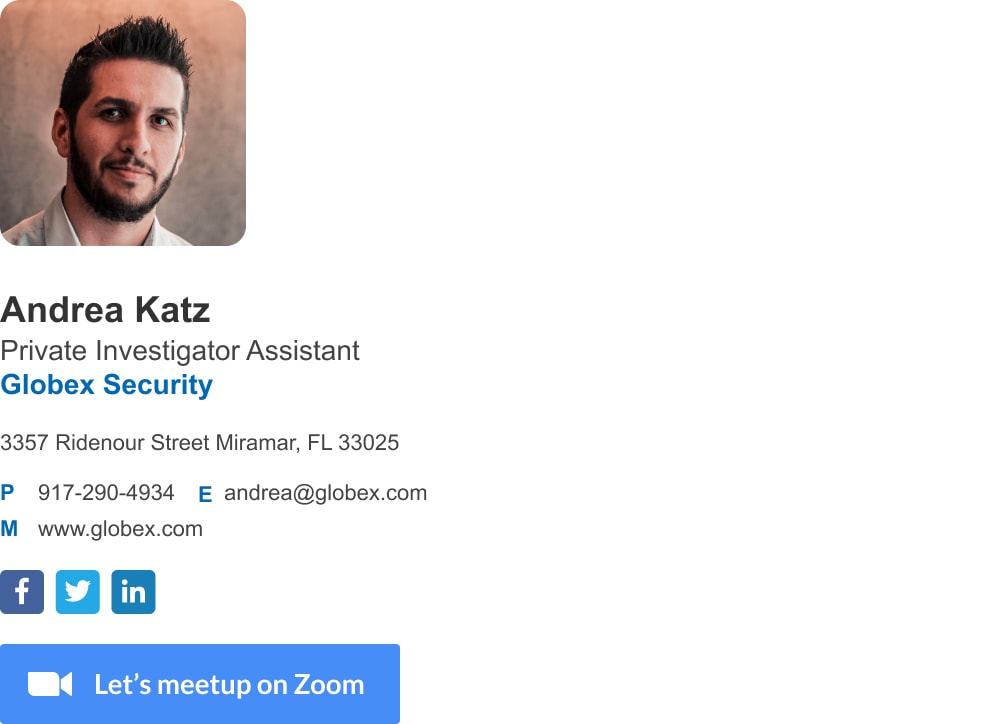
Made with WiseStamp
A good email signature for your cold outreach should contain:
- Name
- Good quality image of you
- Company logo
- Current position within the company
- Physical address
- Phone number
- Company website link
- A CTA with your most important offer
Feel free to take inspiration from any of the signature templates in our signature gallery.
7. Test and Optimize
If you’re doing a lot of outreach, you should track your email open and conversion rates using email tracking software, so you could continuously test and analyze the results of your effort. until you’ve measured your campaign you can’t know for sure if it was the bomb or a complete dud.
Once you’ve started measuring now the question becomes, “am I performing as well as I could?”, “Can I get more out of this campaign?”.
To answer these questions you’ll have to start testing your cold outreach campaigns. Testing doesn’t have to be complicated. All you need to do is track the performance of different versions of outreach emails.
Test everything you think can influence the conversion metrics for your outreach campaigns. Assuming a decent open rate of about 10% you should make just 2 variations with at least 35 emails sent with each (unless you have huge amounts of emails sent out, in the hundreds or thousands per month). Otherwise, your tests will not statistically represent real-world results.
Keep the changes you do to your variations very small. If you make lots of changes at once, you’ll not be able to single out the change that made the difference. Your opportunity to learn will be lost.
It’s also important to keep testing because even if one version of your campaign works wonders at the moment, but you can’t rule out that you can do better.
What to test?
- Subject lines
- Opening line
- Email body
- Target groups
- Email Signature
- Email signoff
- Times of day sent
- Visuals
- Positive vs. negative message framing
Conclusion
Cold email outreach is not a science that requires extra knowledge and secret skills. However, if you don’t plan properly you will not succeed.
To summarize:
- Define and set clear goals about want you as a business want to achieve with your cold email writing.
- Research your potential customers and understand everything about them.
- Create personalized templates according to your potential customers
a) Find the right contact details
b) Creating a perfect subject line
c) Email personalization
d) Include a CTA that will guide your recipient to take an action
e) Always represent yourself with a professional email signature
The only question that cold outreach raises is how to get a strong response rate. So, keep in mind important metrics for measuring cold email outreach campaign success:
- Deliverability
- Reply rate
- Conversion rate
Hope this guide has revealed to you the aspects behind cold email outreach. And the tips you got familiar with will help you in your outreach campaigns.

